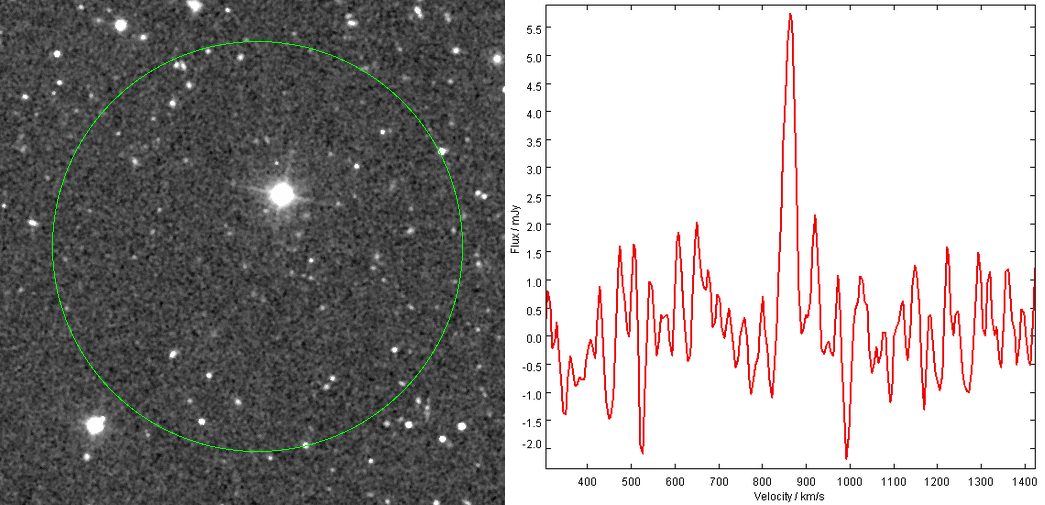The Arecibo Galaxy Environment Survey is a deep HI survey covering 16 target areas to an rms of 0.7 mJy at 10 km/s velocity resolution (see Auld et al. 2006 for full details). With a 3.5' FWHM, the survey reaches a column density sensitivity of 1.5x1017 cm-2, enabling a search for low-mass extended gas features that can reveal new information on the origins of structures such as the Leo Ring. Observations of the Leo field cover 5x4 degrees and were carried out betwen 2012 and 2019.

AGES coverage regions (red and green) compared to ALFALFA (blue). For the present analysis we consider only the Leo field to a velocity < 1,600 km/s.
The Leo Ring was first fully mapped in Schneider 1989. It is an enormous, exceptional feature, 200 kpc across with an HI mass in excess of 109 M☉. Unlike many HI features, although found in a group it has no obvious parent galaxy. While most of the Ring is optically dark, some optical and UV emission has been detected in different areas (e.g. Schneider et al. 1989, Michel-Dansac et al. 2010, Mihos et al. 2018).

Previous imaging of the Leo Ring using the Westerbork interferometer, from Michel-Dansac et al. 2010.





